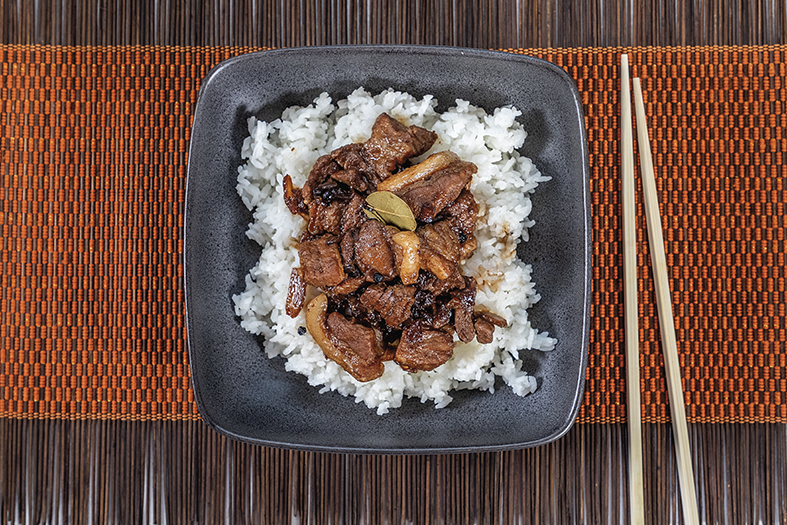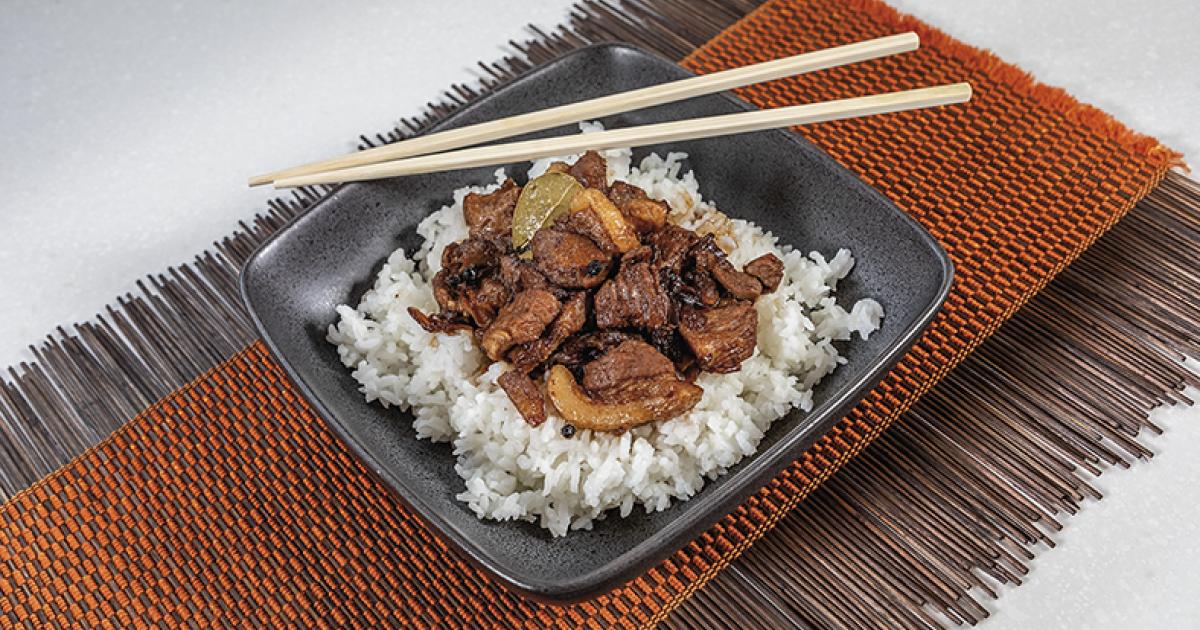Facing the challenge of finding and recruiting teachers to fill eight openings at the start of the 2023-24 school year, the Mott-Regent School District looked across borders to find talent in the Philippines. The rural school district eventually hired two North Dakotans and six Filipino educators, who are teaching kindergarten, first grade, science, math, music and special education this year. Beyond sharing their teaching talents, the Filipino teachers are also sharing their culture, with students, the school and the local community. Read the story here.
As the Filipino teachers learn about North Dakota delicacies, like fleischkuekle and kuchen, they are eager to share some Filipino favorites as well. Jezreel Mulit shares a recipe for maja blanca, a coconut pudding with a corny twist, which could feed an entire classroom of hungry students! And Joanna Slayton shares a classic Filipino pork adobo recipe that pleased our North Dakota palates.

(Filipino Coconut Pudding)
2 cans coconut milk
1 can sweetened condensed milk
¾ cup evaporated milk
½ cup white sugar
1 can of sweet corn (whole kernel or cream)
¾ cup grated cheese
2 cups cornstarch mixed in 4 cups of water
Peanuts or coconut flakes, for serving
Mix all ingredients before heating, except for the cornstarch and water mixture.
Transfer to a large stockpot and cook over medium heat, stirring constantly. Adjust the heat as necessary depending on stovetop, constantly stirring, to ensure bottom doesn’t burn. Once the pudding begins to boil, reduce heat to medium or low and add the cornstarch water mixture. Continue stirring to avoid burning, until the pudding is too heavy to mix or becomes gelatinous. Taste to ensure cornstarch has cooked out of pudding, then remove from heat.
Transfer pudding immediately to a 9x13-inch pan (or containers of choosing). The pudding cools fast, so do this quickly and make sure pudding is flat in the pan or container. Slice to serve. Top with more cheese, peanuts or coconut flakes.
RECIPE by Jezreel Mulit, Filipino first-grade teacher at Mott-Regent Public School.

1 lb. pork belly*
1 T. garlic, minced
1 onion, diced or sliced
½ cup vinegar
½ cup soy sauce
½ cup water
2 bay leaves
½ T. black peppercorns
1 red chili or habanero pepper, optional (omit if you don’t like it spicy)
1 T. brown sugar
Salt and pepper, to taste
Cut the pork into cubes. Put all ingredients in the pot, except for the bay leaves, peppercorns, chili and sugar.
Cook on high heat until it begins to boil. Reduce to medium low and let simmer for 15 minutes. Stir and add bay leaves, peppercorns and chili. Continue to cook on low until pork is tender, mixing occasionally to ensure nothing sticks to the bottom of the pan.
Mix in sugar and season with salt and pepper, to taste. Serve over rice or a salad. It tastes great right off the stove, Joanna says, but even better the following day (just like gumbo)!
*Pork butt or chicken could also be used in this recipe. We liked the fattiness of the pork belly in this preparation, which is cut by the vinegar in the sauce and the heat from the chili pepper.
TIP: For an authentic Filipino adobo, use soy sauce and vinegar from the Philippines, which can be found online or locally at an Asian market. Liza Kessel, North Dakota Living’s senior graphic designer, photographer and Filipino-American, says there will be a distinct difference in taste if using Filipino ingredients.
RECIPE by Joanna Slayton, Filipino-American paraprofessional at Mott-Regent Public School










